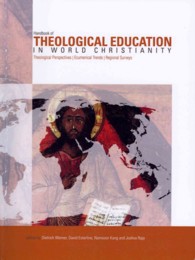- ホーム
- > 洋書
- > 英文書
- > Religion / Ethics
Full Description
This book draws attention to a striking aspect of contemporary Japanese culture: the prevalence of discussions and representations of "spirits" (tama or tamashii). Ancestor cults have played a central role in Japanese culture and religion for many centuries; in recent decades, however, other phenomena have expanded and diversified the realm of Japanese animism. For example, many manga, anime, TV shows, literature, and art works deal with spirits, ghosts, or with an invisible dimension of reality. International contributors ask to what extent these are cultural forms created by the media for consumption, rather than manifestations of "traditional" ancestral spirituality in their adaptations to contemporary society.
Spirits and Animism in Contemporary Japan considers the modes of representations and the possible cultural meanings of spirits, as well as the metaphysical implications of contemporary Japanese ideas about spirits. The chapters offer analyses of specific cases of "animistic attitudes" in which the presence of spirits and spiritual forces is alleged, and attempt to trace cultural genealogies of those attitudes. In particular, they present various modes of representation of spirits (in contemporary art, architecture, visual culture, cinema, literature, diffuse spirituality) while at the same time addressing their underlying intellectual and religious assumptions.
Contents
List of Figures
List of Contributors
Introduction: The Invisible Empire: Spirits and Animism in Contemporary Japan, Fabio Rambelli (University of California, Santa Barbara, USA)
1. The Dead Who Remain: Spirits and Changing Views of the Afterlife,Sato Hiroo (Tohoku University in Sendai, Japan) translation by Emily B. Simpson (University of California, Santa Barbara, USA)
2. The Mystical "Occident" or the Vibrations of "Modernity" in the Mirror of Japanese Thought, Jason A. Josephson-Storm (Williams College, USA)
3. A Metaphysics of the Invisible Realm: Minakata Kumagusu on Spirits, Molds, and the Cosmic Mandala, Fabio Rambelli (University of California, Santa Barbara, USA)
4. New Religious Movements, the Media, and "Japanese Animism", Ioannis Gaitanidis (Chiba University, Japan)
5. Animated City: Life Force, Guardians, and Contemporary Architecture in Kyoto, Ellen Van Goethem (Kyushu University, Japan)
6. Essays in Vagueness: Aspects of Diffused Religiosity in Japan, Carina Roth (University of Geneva, Switzerland)
7. Came Back Hounded: A Spectrum of Experiences with Spirits and Inugami Possession in Contemporary Japan, Andrea De Antoni (Ritsumeikan University, Japan)
8. The Spirit(s) of Modern Japanese Fiction, Rebecca Suter (University of Sydney, Australia)
9. Techno-Animism: Japanese Media Artists and their Buddhist and Shinto Legacy, Mauro Arrighi (Independent Scholar, Japan)
10. Spirit/Medium Critically Examining the Relationship between Animism and Animation, Jolyon Baraka Thomas (University of Pennsylvania, USA)
11. From Your Name to Shin-Gojira: Spiritual Crisscrossing, Spatial Soteriology, and Catastrophic Identity in Contemporary Japanese Visual Culture,Andrea Castiglioni (University of California, Berkeley, USA)
Notes
Bibliography
Index







